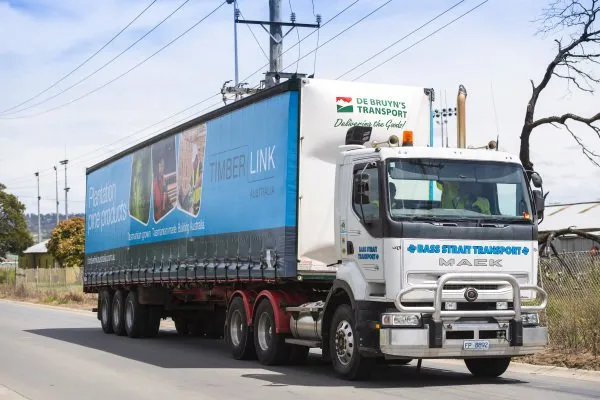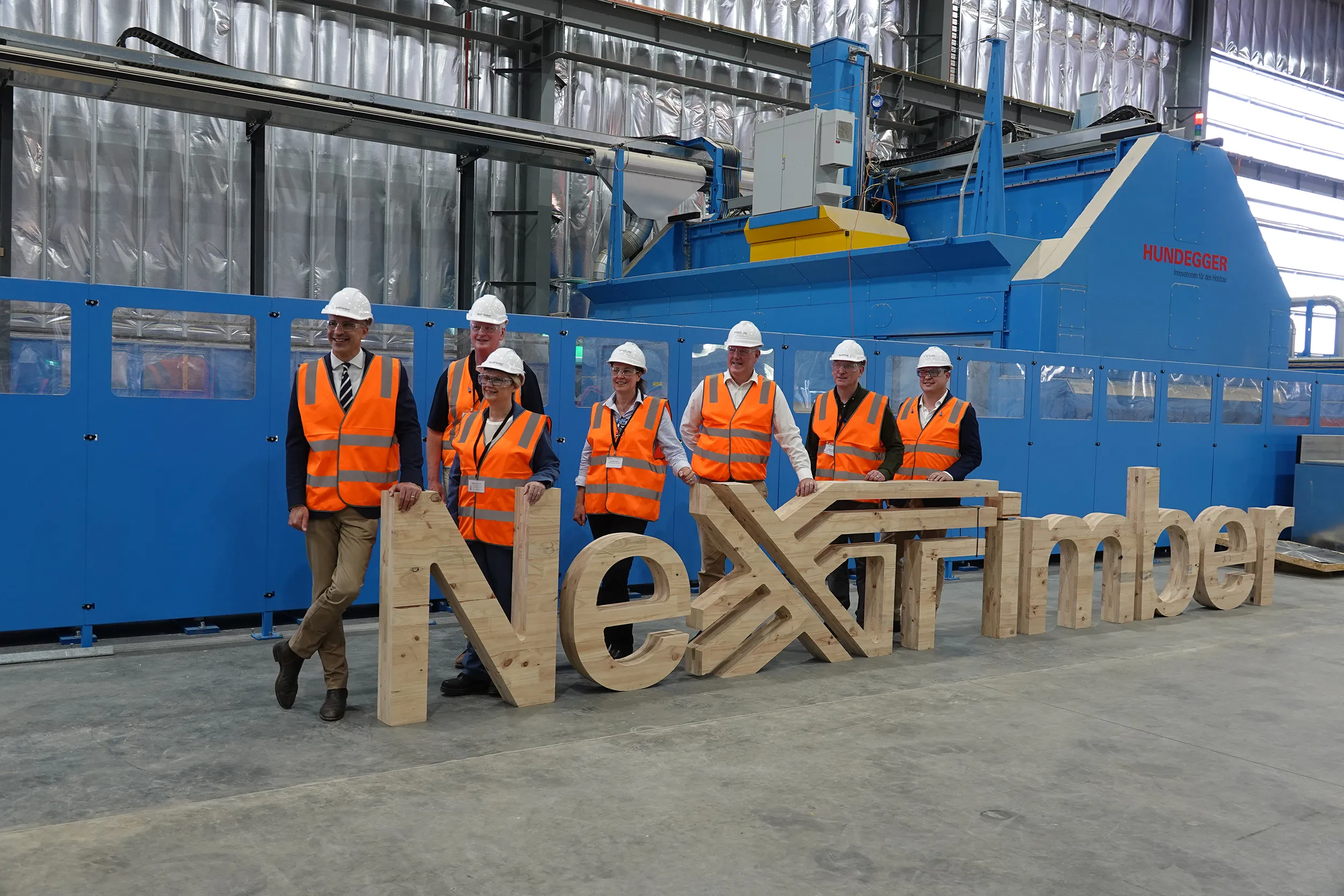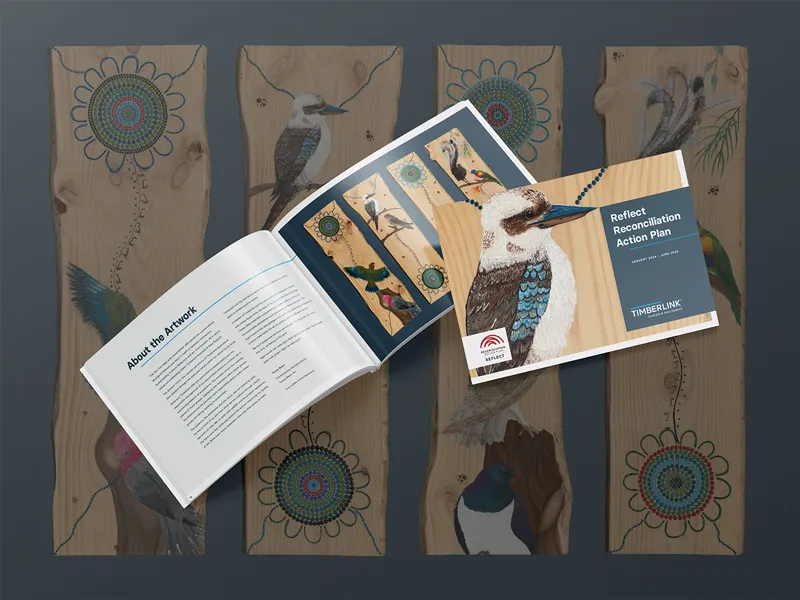Making Timber in the 21st Century – Innovative Australian Manufacturing
How Timberlink uses the latest technology to give you a more consistent stick of timber
Timber is often thought of as an old-fashioned industry, but the reality is that Timberlink, like most thriving Australian manufacturers, are able to remain competitive by using the latest high-tech gear from around the world. That is why we’re in the midst of a $100m Australian mill upgrade program, so our mills are world class and remain competitive. We’ve put together a guide for customer to show you how our timber gets from the forest to the frame.
The Forest
At Timberlink we are proud to say that our pine only comes from plantations across Tasmania and the Green Triangle (Victoria and South Australian border). Every tree that is taken out is replanted afterwards, Timberlink timber is a truly sustainable, natural resource.
It all starts at the nurseries like the one in Burnie, North Western Tasmania, where millions of seedlings are planted around Australia each year. After they have matured into viable seedlings, they are taken out and planted in time for spring.
While the pine trees are growing, they are absorbing up carbon dioxide, a fully-grown pine tree can absorb up almost a tonne of CO2 over its lifetime. The pine tree estates are carefully managed, and we now have the science to track how every stem is growing in the forest. A lidar detector that uses infrared and laser technology scans the forest and records not only size but also the density, fibre quality, altitude and the soil quality, giving the foresters all the information that they need to ensure the estates are managed to best meet our customers’ needs.
After somewhere between 28 and 32-years the pine trees are considered to have fully matured. Decades of selective genetic improvements and increases in knowledge have left us with a superior product in a variety of ways, for example slow growing seeds are now deployed as slower growing timber is stronger and stiffer.
The pine trees are 40-50m tall and over a metre in diameter when cut. They are felled by harvesting machines that cut, scan, strip and then cut the log again into sizes that can be manufactured at our mills. The logs are then loaded onto trucks before being taken to one of our two mills; Tarpeena (South Australia), Bell Bay (Tasmania).
There are strict rules in place that determine what can and what cannot be cut. These include limits on cutting within creeks, rivers and streams as well as natural habitats of native animals. Softwood pine is the safe, environmentally friendly timber option.
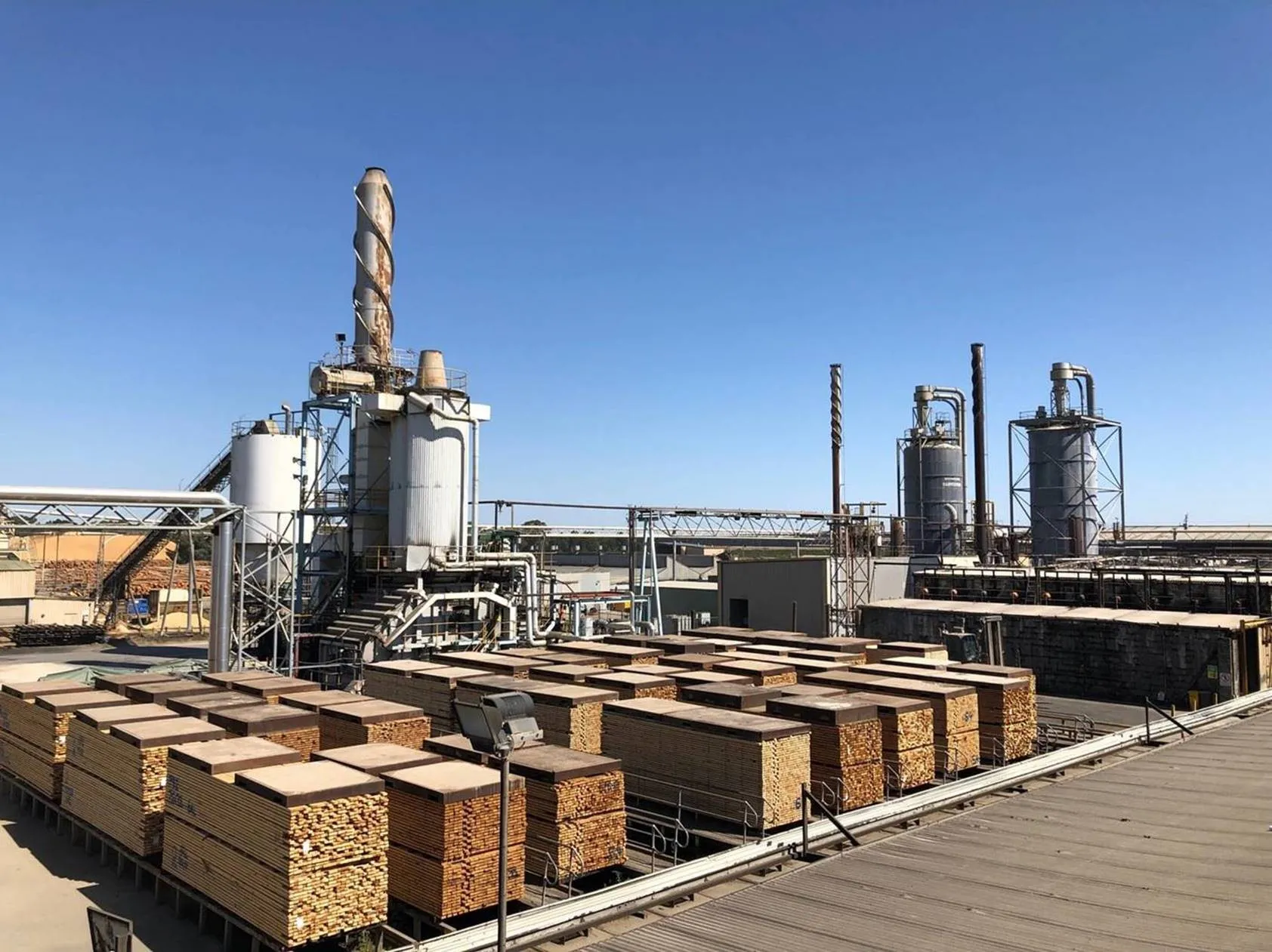
Bell Bay site
Arriving at the mill
Timberlink is proud to be a successful Australian manufacturer and the reason this is possible is due to our world-class manufacturing technology at the mills. It is this technology that allows us to provide our customers with a more consistent piece of timber than ever before.
Our mills are arranged such that large vehicles can enter and exit the site safety. Once the logs come to one of our mills they are arranged by lengths and before being loaded into the mill bark is removed in the debarker.
The Green Mill
Logs are then loaded into the Green Mill where we laser scan each log, it’s no longer set and forget, we use science and engineering to get the absolute best out of each log. The scan uses sophisticated software that considers what our customers need and tries to balance this with the realities of using a natural product.
The log is then cut into strips of timber and the remaining wood is turned into chip to make paper products, while the remaining residue is used to power our kilns.
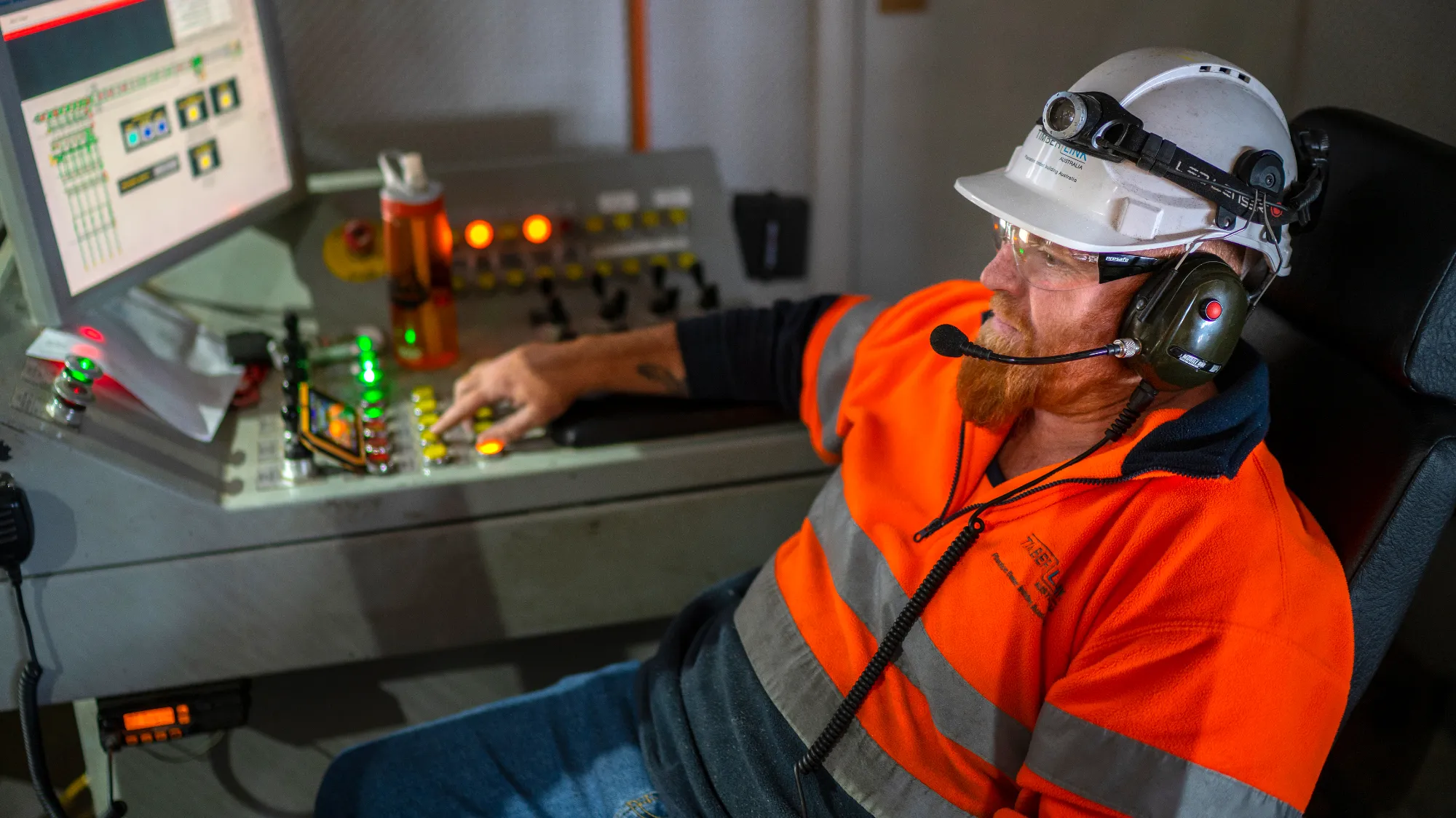
In the Green Mill
Kiln Drying
After being cut into appropriate sizes the timber is then separated by density into stacks before going into the kilns to be dried to reach the optimal moisture content. In Australia this is around 11%. The moisture content is important because it reduces the possible movement in the timber.
Timberlink has installed counter flow kilns (CFKs) in Bell Bay, Tarpeena and Blenheim. This ingenious system slowly heats up the timber whilst circulating air and moves it through the 80m long kiln continuously over 16 hours.
Dr Trevor Innes, Timberlink GM Technical & Sustainability explains that “previously timber was heated at high temperatures in batch kilns multiple times until the moisture content was correct, this rapid heating can make the timber brittle, meaning our CFK’s result in a consistently stronger and superior product.”
We measure samples of timber for moisture after coming out of the kiln and again before going through the planer with a non-contact sensor. This incredible tool sets up an electric field to monitor the moisture content as the timber is passed through for a highly accurate reading.
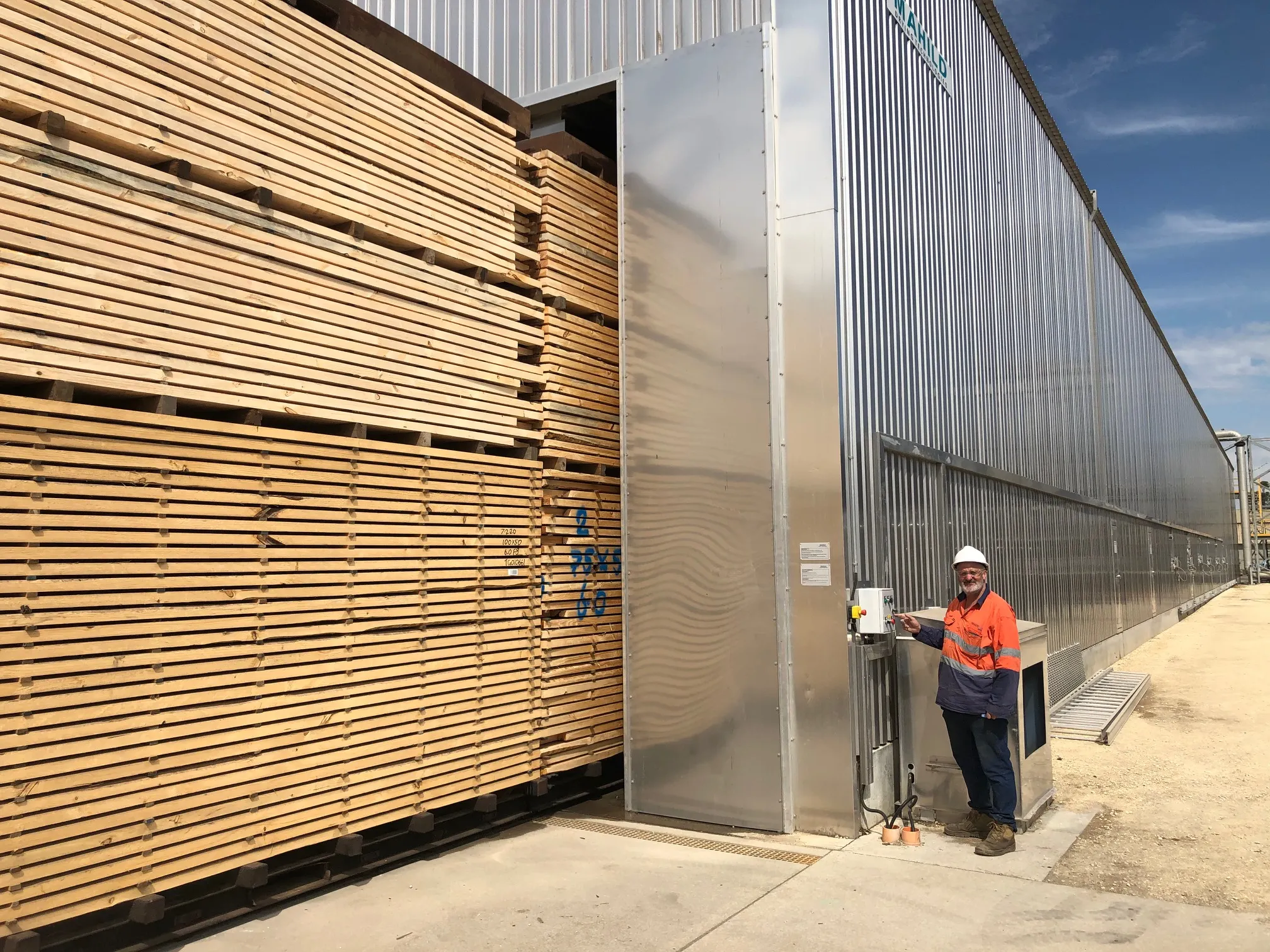
Barry Thomson switches on the Tarpeena CFK
The Dry Mill
Following the kilns our timber goes through to the dry mill to be assessed by some more seriously high-tech gear to ensure the product is ready to go into frames, decks and pergolas around the country.
Each piece of timber first goes through our new Gilber Planer which can scan up to 850 lineal meters of timber per minute, incredibly up to 300kms of timber per day is run through our Tarpeena dry mill alone. Once our timber goes through the planer it goes straight into our Lucidyne scanner.
Who is Lucy? The state-of-the-art Luciydne Scanner gives you a more consistent stick of timber
As a proud Australian manufacturer, we want to stay on top of the game, and that means staying at the forefront of technological advancements. This new Lucidyne scanner, or “Lucy” as we like to call her, uses AI technology to scan our wood with precision far beyond the human eye’s capabilities. This provides us with the assurance of a level of quality that wasn’t possible a few years ago.
At our Bell Bay mill Lucy uses multi-sensory imagery technology in conjunction with new self-training Perceptive Sight software to ensure each piece meets the structural properties required under Australian standards and also exceeds the minimum visual requirements.
“Lucy is just a great piece of high-tech gear” said Dr Innes. “She takes the guesswork out of timber grading.”
“Instead of looking at a piece and making assumptions based on out dated theories about knots or grains, we can use precision engineering technology to give us the best outcome.”
“Like every tradie knows, you need the right tools for the right job or you’ll be left behind. Lucy uses similar AI technology to that used to drive driverless cars, to aggressively detect defects,” said Trevor Innes. “If there are any defects that really impact the structural proprieties of the timber, Lucy will find them.”
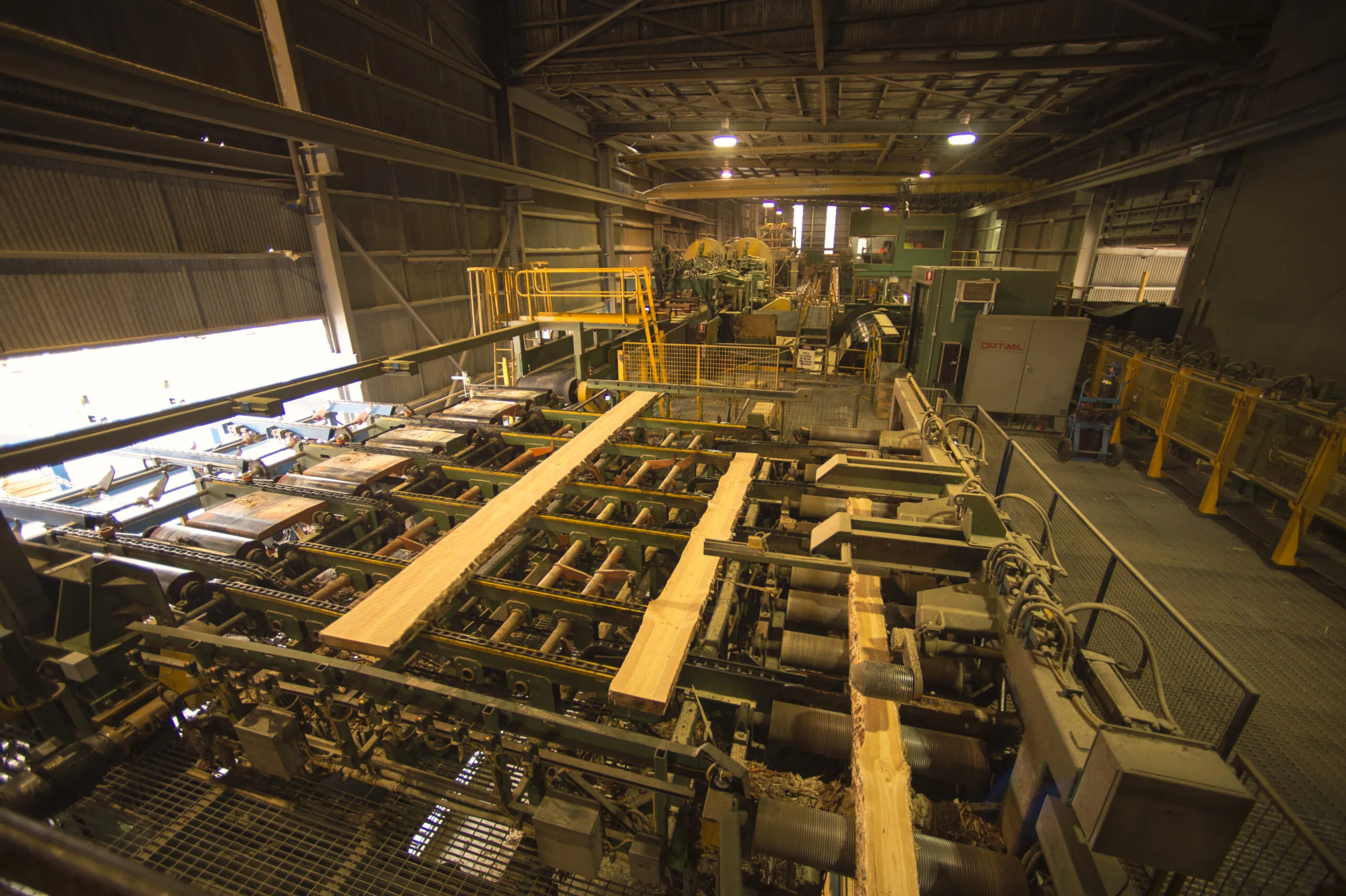
Bell Bay Mill
Metro Guard and Warp Tunnel
Following being scanned by Lucy the timber continues through the Dry Mill towards the metro guard. Here we test the boards for stiffness using the metro guard, physically bending the timber up and down and measuring how much load is required to create that bend.
After the Metro Guard test the timber goes through the warp tunnel. This gives us a 3-dimensional cross section of the timber; the software compares the dimensions and can tell us if the board is warped or twisted. This data is all fed into the Lucidyne optimising computer, where big data analytics is run to give us a grade for each stick of timber.
Treatment
While still in the dry mill some of our timber will be treated for termite protection and become Timberlink Blue, guaranteed for 25 years. Some of our timber will be treated for outdoor structural and become low odour LOSP Timberlink Green. The timber is then sorted into around 60 stacks depending on grade, treatment type and length before being put into packs.
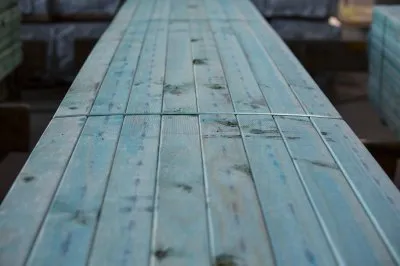
H2 treated timber
From the mill to you
The journey for our timber is far from complete though, it’s loaded up onto trucks and taken to stores across the country. For example, our Tarpeena mill in South Australia sees almost 400 packs of timber leave per day. Once it’s arrived at stores it’s loaded into racks to be ready to be picked up by you, where it is installed and trusted to hold up family’s homes, decks and pergolas for years to come.
I think you would agree it’s an incredible story from a truly incredible natural resource. A job creator that is sustainable, renewable and a superior product, timber really in the ultimate renewable.
